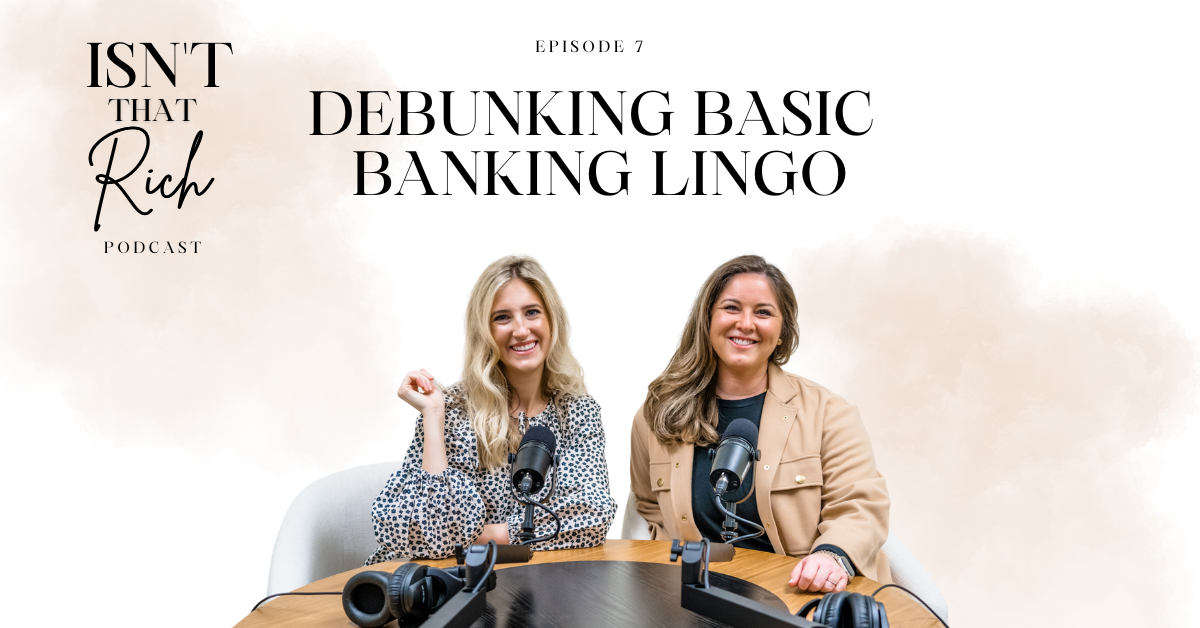Debunking Basic Banking Lingo: Terms You Need to Know
By: Jill Franks and Ashley McVicker

| Apple | Spotify | YouTube |
Navigating the world of finance can often feel like learning a new language, especially with the myriad acronyms used in the banking industry like POD, APY, and DDA. These terms are everyday vocabulary for personal bankers, but they can sound foreign to those outside the financial world. At Farmers State Bank, we're dedicated to demystifying this complex language of banking. Our goal is to empower you with knowledge so that when you step into a bank and hear these acronyms, you'll understand exactly what they mean and feel confident in your financial conversations.
Whether you're opening your first account or aiming to enhance your financial literacy, grasping these fundamental banking terms is crucial. By unraveling the basics of banking terminology, we'll equip you with the tools to navigate financial decisions effectively and communicate seamlessly with your bank.
Understanding POD: Payable on Death
Let’s start with POD, which stands for Payable on Death. You might have heard this term when setting up a bank account. Essentially, it designates who will receive your assets when you pass away. This designation allows your funds to bypass probate and go directly to your chosen beneficiary or beneficiaries.
Deciphering APY: Annual Percentage Yield
APY, or Annual Percentage Yield, is a critical term when comparing savings accounts or investments. Unlike simple interest rates, which only consider the principal amount, APY takes into account the effect of compounding interest. In simpler terms, it shows you the total amount of interest you will earn on an investment over a year, including the interest earned on previously earned interest.
Explaining DDA: Demand Deposit Account
DDA, short for Demand Deposit Account, is commonly known as a checking account. It’s called "demand" because funds can be withdrawn at any time without advance notice to the bank. This type of account typically allows for unlimited deposits and withdrawals, making it highly liquid and accessible for everyday transactions.
Breaking Down FDIC Insurance: Federal Deposit Insurance Corporation
FDIC Insurance protects depositors in case a bank fails. Established in response to the Great Depression, this insurance covers up to $250,000 per depositor, per insured bank, for each account ownership category. This means your money is safeguarded, giving you peace of mind when banking with FDIC-insured institutions.
Unveiling HELOC: Home Equity Line of Credit
HELOC stands for Home Equity Line of Credit, which allows homeowners to borrow against the equity in their home. Unlike a traditional loan, a HELOC works more like a credit card, where you have a credit limit and can borrow up to that limit over a set period, known as the draw period. Interest rates on HELOCs are typically variable, meaning they can fluctuate with the market.
Mastering ATM: Automated Teller Machine
ATM, short for Automated Teller Machine, is a familiar term, but its importance goes beyond convenience. ATMs provide access to your bank account 24/7 for withdrawals, deposits, balance inquiries, and more. They’re essential for quick transactions outside of regular banking hours and often charge fees for withdrawals from non-network ATMs.
Grasping ACH: Automated Clearing House
ACH, or Automated Clearing House, is a network that facilitates electronic money transfers between banks. It’s used for direct deposits of paychecks, automatic bill payments, and person-to-person transfers. ACH transfers are typically more affordable and efficient than traditional paper checks, offering businesses and individuals a reliable way to move money.
By understanding these fundamental banking terms, you’ll be equipped to navigate your financial landscape with confidence. Whether you’re managing your savings, exploring investment options, or simply improving your financial literacy, mastering these terms will help you make informed decisions and communicate effectively with your bank. Next time you hear these acronyms or terms thrown around, you’ll know exactly what they mean and how they impact your financial life.

